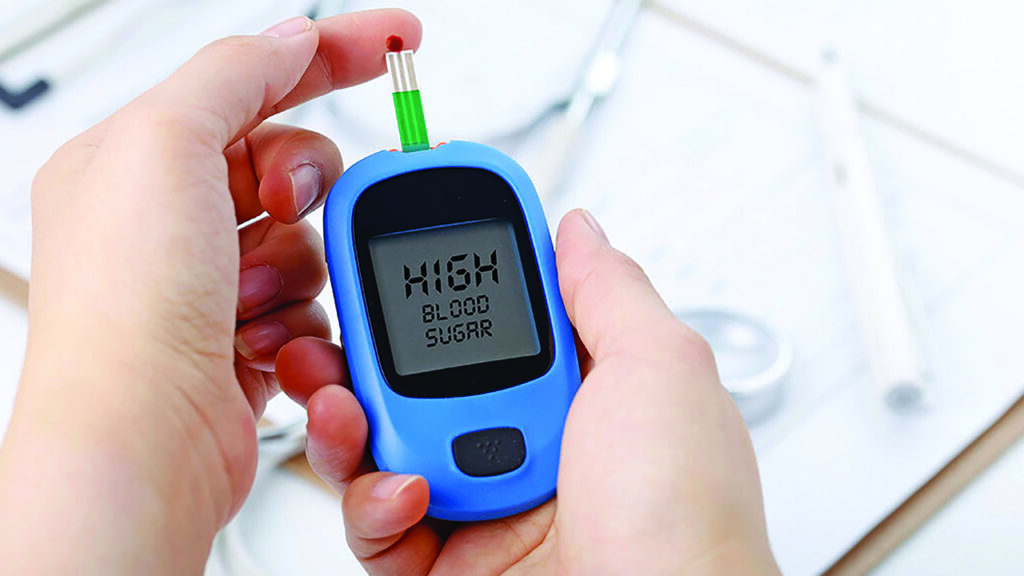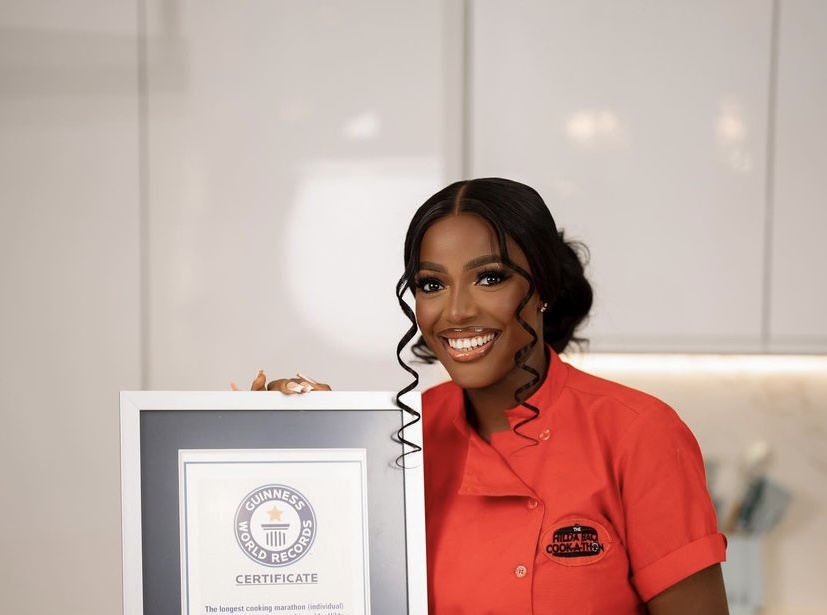
A video somehow caught my attention two nights ago. The video in which a lady speaks eloquently and with undoubted grasp of the subject cannot be timelier. The subject is diabetes. It is a disease ravaging our world today. Centuries-old researches to eradicate it have not gone beyond the borders of relief, albeit commendable, though. Eradication or total cure seems farfetched as things stand now. I want to believe I can take Professor Oyeku Oyelami’s generous liberty to be a pretender to the throne by making copious references to his book on this all-important matter. Come to think of it this column attempted to delve into the subject in these pages 32 years ago. At the time, it was already afflicting mankind, and was sufficient cause for worry. It was not at the alarming rate and spread of these times.
As the lady states in the very instructive presentation, “Diabetes is a fairly modern disease. Diabetes is a lifestyle disease.” She reminds the world: “Hypocrites, the father of medicine made no mention of diabetes in his writings. Quoting Newton’s Law of Motion, she says: “Newton’s third Law of Motion states that to every action, there is an equal and opposite reaction.” She speaks about the place of pancreases in our body system. “Why is it the pancreases are not working? That is the question we should be asking. One of its main roles is to release two hormones—one is insulin bringing down sugar level and the other glucagon which gets the sugar level supply up.” With the two working in harmonious hormonal collaboration the sugar level is regulated. Generous protein, legumes and grains give the guarantee of protection after necessary processes.
Professor Oyelami of the University of Obafemi Awolowo, Ife, who has done an extensive study on the disease, states in his book, ‘A Clinician’s Experience With Herbs That heal’: “It is estimated that about four million Nigerians may be suffering from the disease; and given the increasing westernised lifestyle, the number is bound to rise. More than two million people in the UK have the condition, and up to 750,000 are believed to have it without realising that they do. More than three-quarters of people with diabetes have what is called Type2 diabetes mellitus. This used to known as non-insulin dependent diabetes mellitus (NIDDM) or maturity onset diabetes mellitus. The others have Type 1 diabetes mellitus which used to be known as insulin-dependent diabetes mellitus. The difference is that in Type 1, the body is unable to produce any insulin. This usually starts in childhood or young adulthood. It is treated with diet control and insulin injections. In Type2, not enough insulin is produced or the insulin that is made by the body doesn’t work properly. This tends to affect people as they get older, and usually appears after the age of 40.
“Under normal circumstances, the hormone insulin, which is made by the pancreas, carefully regulates how much glucose is in the blood. Insulin stimulates cells to absorb enough glucose from the blood for the energy or fuel that they need. It also stimulates the liver to absorb and store any glucose that is left over. After taking food, the amount of blood glucose rises and this triggers the release of insulin. When the glucose level falls, for example during exercise, insulin levels fall, too. Another hormone manufactured by pancreas is glucagon. It stimulates the liver to release glucose when it is needed and this increases the level of glucose in the blood.”
The lady in video goes to list as scientists are wont to do foods we should avoid such as refined grains, refined sugar, pasta, pizza, cakes, indeed also bread, foods that come under the umbrella of carbohydrates. These are what are predominant in the modern-day menu. In 1992 when this column delved into the subject, it drew attention to the warning of diabetics that Nigerians should soft-pedal on soft drinks thought at the time to be the main sources of refined sugar that is consumed.
As nothing has changed and indeed, the modern lifestyle that is the trigger, has gone worse, I have decided to point to the column again part of which reads as follows, breaking it down to ordinary day language: Diabetics, like soft drinks, today hardly requires any introduction. They are people whose bodies are unable to dispose of sugar in their blood. When the sugar becomes too much for their bodies to bear, they collapse and may even die. So, to prevent that, diabetics must inject themselves everyday with insulin which burns off the sugar but which their bodies, through disease, either can no longer produce or, when it does produce it, cannot pump into the blood stream at all or in an adequate measure or quantity.
A daily routine of insulin injection is not funny; it is certainly not a life to joyfully look forward to. Not with those painful needle sores all over the body and that inevitable new prick at the sight of an old festering sore. It can cost a lot of money, too, stockpiling insulin injections against the rainy day, the day of shortages and price hikes. And unending test appointments, blood tests, sugar level tests and hypertension examination. Much money is tied down that could have been spent more beneficially, more so in these days when money has lost its reputation, and pull as hard as you may, the ends, as if by conspiracy, just refuse to meet. Perhaps the worst psychological torment for the diabetic is when he just cannot find insulin injection to buy, or it is beyond his reach, and friends and relations long overburdened, begin to keep safe distance.
It is the wish of the Nigerian diabetics that other people don’t go through their experiences which makes them deserve our gratitude, also for their timely warning as the Lagos wing of the Nigerian Diabetic Association. The same cannot be said of the Nigerian doctor of the mid-70s who appeared to look the other way when the Lagos water supply system was overrun by sea water and, for months, Lagos public water supply was heavily saline. The glass of tap of water then tasted so saline that hardly could it taste clean even after boiling and then cooling or cotton fabric filtration. Consequently, those dependent on public water supply looked for borehole water or took recourse to soft drinks. Many travelled in their cars beyond Lagos to the outskirts, neighbouring communities and towns to fetch water.
At the time, soft drink market was booming and the argument of salesmen to those who were ill-at-ease and therefore tried hold themselves in check was that all carbohydrate foods end up in the body as sugar. It was argued that there is sugar in orange, banana, pine apple, rice, gari, in fact, in any starchy food and that whoever would have diabetes cannot blame sugar for it. It must be enheartening, indeed, that research is being scaled up to determine where the verity lies for believers that sugar is an agent of diabetes or the doubting Thomas’s who say sugar, natural or denatured can kill or cause diabetes, howbeit under certain circumstances.
If we may give the floor to Harvey and Marilyn Diamond, authors of Fit for Life: From their research, “Over two hundred million soft drinks are consumed in this country (U.S.) each year. Actually, they are anything but soft on your body, except for your teeth. Dr. Clive McKay of Cornell University showed that soft drinks can completely erode enamel and make teeth as soft as much within two days (as described in “The Poisoned Needle by Eleanor McBean). The ingredient that is the culprit here is a horrific concoction called phosphoric acid. These drinks also contain malic acid, carbonic acid and crythorbic acid among other things. The malic and citric acids to be found naturally in fruits and vegetables are of a nature that turns alkaline in the system. The ones to be found in soft drinks, Dr. McKay claims, remain acid because they are fractionated and usually extracted with heat. Your pH balance can be thrown into turmoil just by reading the label of a soft drink! There are other harmful ingredients in these drinks as well, plus refined white sugar about five teaspoons per eight-ounce serving. The only difference between regular and diet sodas is that instead of sugar a substitute is used, so harmful that each container has to have a warning on the label just like cigarettes. Plus most sodas have as the old nemesis, caffeine. Some of the additives used are coal-tar derivatives, another carcinogen. When soft drinks are taken with food, it leads to fermentation instead of good digestion. Aside from tricking the body into thinking they taste good, there are no benefits.
The caffeine should be reason enough not to give the beverage to children. It is increasing that most parents won’t allow their children to drink coffee, but they condone caffeinated soft drinks. You may be wondering why caffeine is added to these drinks. According to Dr. Royal Lee of Foundation for Nutritional Research, Cola is loaded with habit forming caffeine so that once the victim becomes accustomed to the stimulant; he cannot very well get along without it. There is only one reason for putting caffeine in soft drink to make it habit forming.’
The researchers say if you can cut down on this non-nutritious, empty calorie conglomeration of acids and cancer causing chemicals, by all means do. There are many carbonated waters that although not ideal (because of high salt content and inorganic minerals) are far better.
“In the process of refining sugar, every vestige of life and nutrient is stripped from it. All the fibre, vitamins, minerals, everything is virtually removed, leaving only a deadly remnant. Sugar makes people fat because it supplies only empty, low calories and excessive carbohydrates that are converted to fat. This causes a person to over-eat to obtain needed nutrients.”
The manufacturers have shot back saying a meta-analysis has showed no link between soft drinks and other sweetened, sugary beverages and cancer as well as diabetes. A school of thought believes that they must have their own laboratory to determine what amount of ingredients goes into what. Also drinking must be done in moderation, anything taken in excess is harmful. The manufacturers have a boost, according to Reuters, from U.S. regulators that have said soft drinks from PepsiCo Inc and Coca-Cola Co posed no health risks. Consumers, themselves have said the soft drinks they buy are safe.
Typical of matters of this nature, the other party is saying that sugary soft drinks contain no vitamins, minerals or fibre and regular soda is full of calories. It shows that counter standpoint does not go away and it is that people who consume sugary drinks –one two cans a day or more –have a 26 per cent greater risk of developing Type2 diabetes than people who rarely have such drinks. Harvey and Merilyn Diamond can go on and on. So can other researchers. One research finding has even linked sugar with hypertension. Another implicates it in dementia or loss of memory. In the case of dementia, the argument is that sugar does not contain thiamine or vitamin B1. Carbohydrates or starchy foods become glucose in the body. And glucose is the main food of the brain. But it cannot be useful in the absence of thiamine. When added with processed sugar as in soft drinks, the body borrows from its reserves kept in the muscles or the heart. These weaken the organs over time. When it becomes dangerous to borrow, the body stops borrowing and stops using glucose, as in the case of the brain.
In this situation, the brain becomes malnourished in the midst of plenty, loses its vitality and may even die. Thus victims lose memory altogether, and forget how to do certain things, especially as muscle co-ordination may have been impaired.
The bottom line of the message of the Diabetes Association of Nigeria unarguably is: “Let’s be natural.” Therein lie health and greatness. Out of Nature has the human body emerged. And out of Nature has the nourishment it requires come. Nature gives the body the nourishment homogenous with its make-up not only in component texture but in healthy balance as well. Man disarranges the texture and balance of nutrients. As the Revised edition Chambers 21st Century Dictionary puts it: Being natural means “relating to Nature, or parts of the physical world not made or altered by man.”But the earlier edition, 20th Century Chambers Dictionary, puts it, in my view, more comprehensively and better: Being natural means “pertaining to, produced by, or according to Nature, not miraculous; not the work of man; not interfered with by man.”











